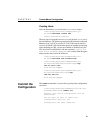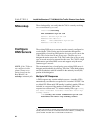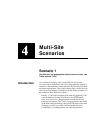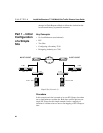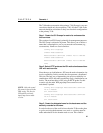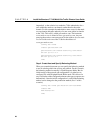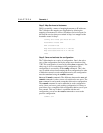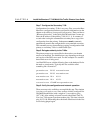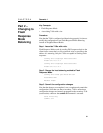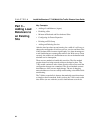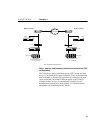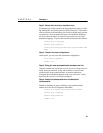
C H A P T E R 4 Scenario 1
29
Step 5. Map Services to Hostname.
DNS is essentially a means of mapping hostnames to IP addresses.
The 7190 takes this mapping one step further by allowing the
mapping of hostnames to services (IP address and service port). In
this step the services that were created in Step 1 are mapped to the
hostname created in Step 2.
config dns zones geo.mstd-ex.com.
hostnames create www
www siteservices
map westcoastsite:10.2.1.100:80
map eastcoastsite:10.2.2.100:80
info
Step 6. Save and activate the configuration.
The 7190 maintains two copies of configuration. One is the active
copy of the configuration used by the name server function of the
7190. This configuration is accessed by all the show commands. The
other copy is for in-work changes of the configuration. This
configuration is accessed by all the config commands. This is the
copy in which we have been entering the new configuration. In order
to make the current in-work configuration active, the configuration
must be committed using the commit command.
Save and Commit commands: The difference between the save and
commit commands is often a source of confusion for new users. The
save command is used to make a snapshot of the active configuration.
The commit command is used to make the in-work configuration
active. Once you have a good working configuration it is always a
good idea to save a snapshot of this configuration before you do your
next commit. This way if there is a problem with the new
configuration you can use the restore command to revert to the
previous configuration.
commit all



